While yesterday’s evaluation was more about the growth (which might have plateaued out or maybe even regressed a little) of Twitter, today, I want to look at how Twitter is being utilized by the user. Just like yesterday, all the following diagrams are based on data extrapolated from about 10% of all Twitter-accounts:
Friends and Followers
Lets start out with the core function of Twitter: accounts that you follow yourself (Friends) as well as accounts that are interested in your own status-updates (Followers). The following shows these numbers as categories with the corresponding percentage of Twitter-accounts that fit these criteria:
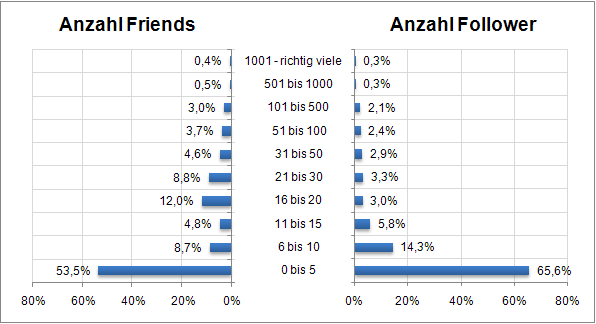
If we assume that Twitter is
rather boring with only two or three streams that are being followed, we will notice that these numbers show that you should not overestimate the pure amount of existing Twitter-accounts. It seems that only surprisingly few of them are actually used much.
Tweets per month
The next diagram shows the average Tweets per month after the sign-up-date:
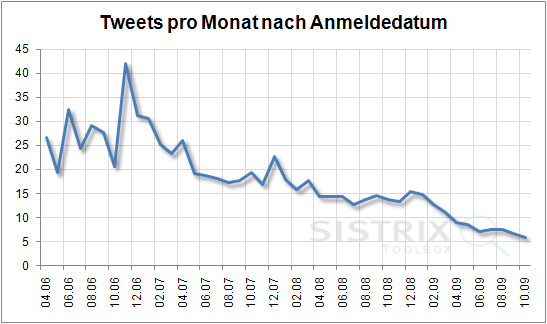
While a few month ago, this number had leveled out at around 15 Tweets a month, it took quite a hit during the last months of rapid account-growth and is currently coming in at around 5. The comments for part I of this evaluation had an explanation for this, in that these new accounts are purely for reading other Tweets, making it a passive usage of those new accounts. It is rather hard to say anything to this from the outside, as only Twitter would have the numbers to prove or disprove such a theory.
Clients used
This analysis shows that Twitter is not only used through the webinterface but also through a number of different clients:
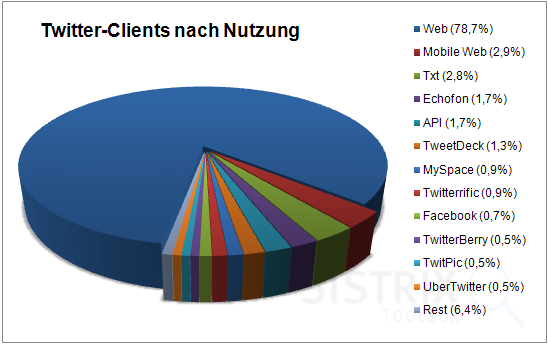
While the webinterface is, by far, the most commonly used interface, those possible alternatives are catching up. What surprised me was the number of different clients that are available: the database holds about 2.800 different applications.
Tweet content
What do these ominous Tweets actually contain? Seeing how there was no intern willing to categorize this handful of data, an evaluation has to suffice. For this, we determined the percentage of how often four features, that are common for the Twitter-universe, were used:
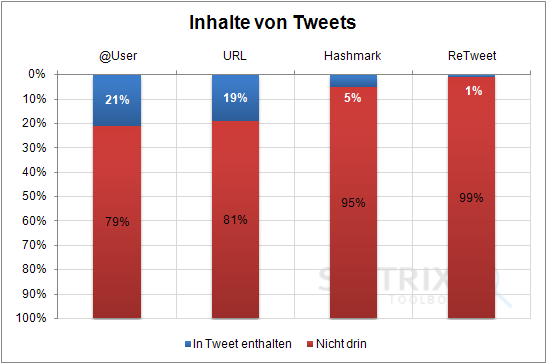
The @-sign in front of a user-name for addressing other users, is the most commonly used feature with a little over 20%. ReTweets, meaning the repetition of a message by another users so that it gets more coverage, only make up about 1% of all Tweets.
Broadly used Domains & URL-shorteners
Seeing how there are only 140 characters available per Tweet, services that truncate long URLs have come into fashion again, so that there is more room for the actual message. For this diagram, we examined all Tweets with a URL to a certain domain:
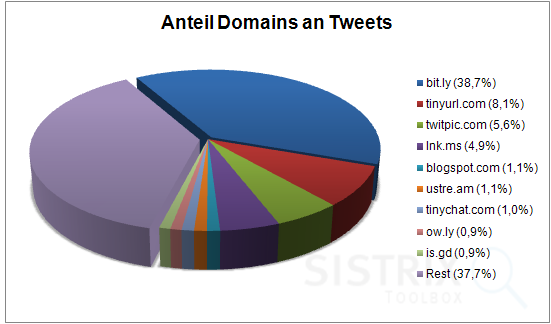
It can easily be seen that Bit.ly (not only thanks to their close cooperation with Twitter) is heading the field by a good bit: nearly 40% of the URLs that are used on Twitter run through this service. Tinyurl.com, which was top dog not too long ago, has now been left far behind.
That is it for today. The third and last posting for this Twitter-series will have to wait until Monday. At that time, I want to take a look at how Twitter’s development on the German market is going, for which I have to run all the Tweets in the database through a language-detection service.
Part I: Twitter: Growth
Part II: Twitter: Usage
